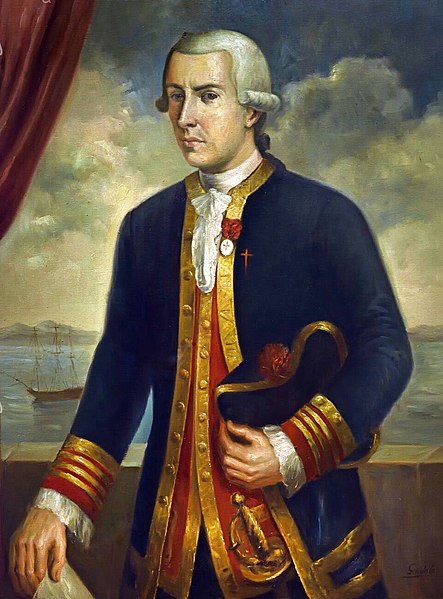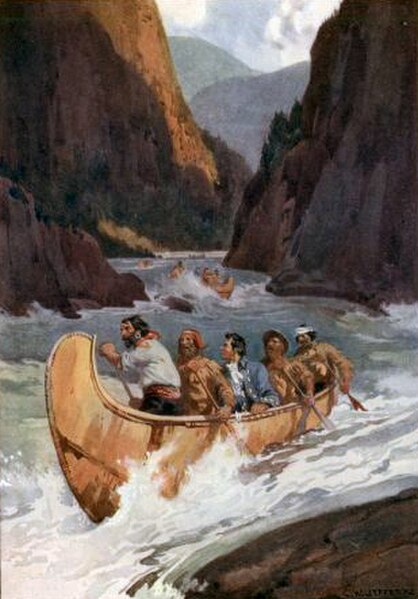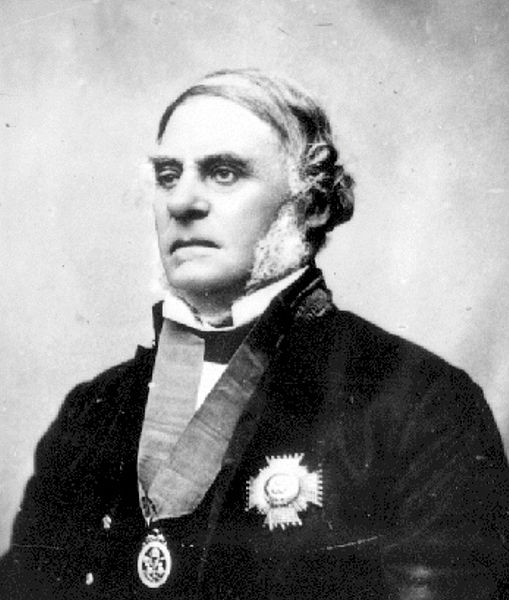History of British Columbia
The history of British Columbia covers the period from the arrival of Paleo-Indians thousands of years ago to the present day. Prior to European colonization, the lands encompassing present-day British Columbia were inhabited for millennia by a number of First Nations.
Tsimshian people c. 1892, Metlakatla.
Juan Francisco de la Bodega y Quadra, a Spanish naval officer who was a part of a naval expedition to the region in 1775
Depiction of Voyageurs along the Fraser River in 1808 by Charles William Jefferys
Fort Simpson in 1857. The fort was a HBC trading post in Lax Kw'alaams.
Colony of Vancouver Island
The Colony of Vancouver Island, officially known as the Island of Vancouver and its Dependencies, was a Crown colony of British North America from 1849 to 1866, after which it was united with the mainland to form the Colony of British Columbia. The united colony joined Canadian Confederation, thus becoming part of Canada, in 1871. The colony comprised Vancouver Island and the Gulf Islands of the Strait of Georgia.
The Great Seal of the Island of Vancouver and its Dependencies was designed by Benjamin Wyon, Chief Engraver of Her Majesty's Seals, c. 1849. The badge he designed is the basis for the unofficial flag of Vancouver Island that debuted in 1988.
Sir James Douglas, second Governor of Vancouver Island
Sir Arthur Kennedy, third and last Governor of Vancouver Island







